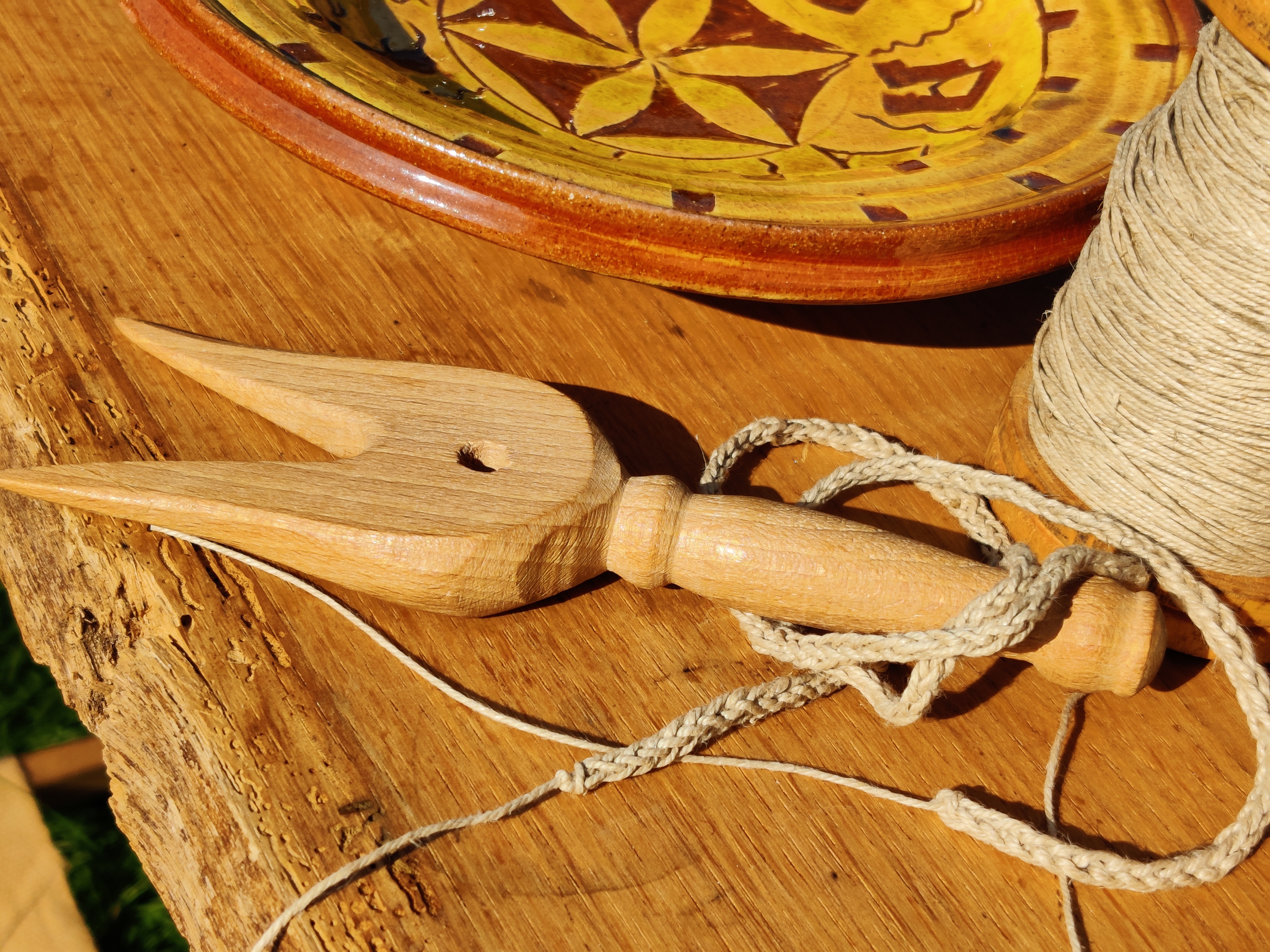Ties that bind.
Using a simple wooden tool, known as a lucet, our cord or point maker braids lengths of wool, linen or silk to create a strong, four-sided cord that has a multitude of uses. Their primary function is to fasten clothing. Although belts were used for pouches and knives they weren't used to keep trousers up! So these clothing ties become incredibly important in fastening hoes to upper garments like porpoints. The ties are also used to fasten kirtles or on bags as handles.
Small cones of brass, known as aiglets, are fastened to the end of the cords to tranform them into 'Points'. This simple addition ensures that the ties can easily move through small holes in both fabric and armour.
Woolen points were used solely for clothing ties but linen points are much stronger, stronger still if dipped in melted beeswax to create a mouldable point. These waxed points were essential when tying armour onto arming jacks. The waxed linen points won't shift when a knot is tied, giving the knight or Man at arms maximum mobility, ensuring they are not at a disadvantage to their opponents in battle.
